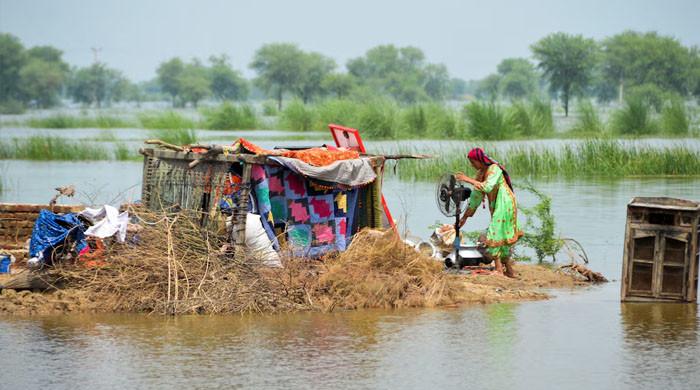Flood Alert Issued by NEOC: Citizens Urged to Take Precautions
The National Emergencies Operation Center (NEOC) has issued a flood warning, advising vulnerable residents in proximity to rivers and streams to exercise caution and identify secure evacuation routes.
NEOC, operating under the National Disaster Management Authority (NDMA), further recommended that individuals move crucial possessions, vehicles, and animals to elevated and safer ground.
In a released statement, NEOC emphasized, “Emergency kits, including sustenance, potable water, and medical supplies, should be assembled to last a minimum of three to five days.”
NEOC has cautioned about potential weather and flood hazards in the coming 48 hours, given the ongoing monsoon season. Current weather patterns are anticipated to bring episodes of moderate to heavy rainfall until July 10, especially over major river drainage basins, increasing the risk of both river and flash floods in susceptible regions.
Prime Minister Muhammad Shehbaz Sharif has also instructed NDMA to maintain a state of high readiness during this period. Recent monsoon rains and floods have tragically resulted in at least 79 fatalities and 140 injuries nationwide.
Residents in areas near rivers, streams, and canals are advised to be alert for sudden increases in water levels, particularly during nighttime or periods of intense rainfall. Communities are also encouraged to stay informed via official flood alerts and weather advisories.
The disaster authority also requested district administrations, notably in northeastern and central Punjab, to verify the operational status and availability of de-watering pumps to manage potential urban flooding.
NEOC’s projections indicate increased water flows in major rivers such as the Kabul, Indus, Jhelum, and Chenab.
Currently, the Indus River is experiencing low flood levels at Tarbela, Kalabagh, and Chashma, with Taunsa also expected to reach the low flood mark.
The Chenab River is anticipated to reach low flood levels at the Marala and Khanki stations. The Kabul River at Nowshera is expected to rise to low flood levels, with the Swat and Panjkora Rivers, along with their associated streams and canals, potentially swelling due to rainfall in their catchment areas.
The Jhelum River, including its tributaries, is projected to experience increased inflows, which could trigger localized flash floods. Inflows at Mangla Dam on the Jhelum River are anticipated to reach the low flood limit.
In northeastern Punjab, canals originating from the Pir Panjal range may see substantial increases in water levels, potentially reaching medium flood intensity. Additionally, hill torrents in the Dera Ghazi Khan and Rajanpur districts could become active, generating medium to high flows once again.
In Balochistan, canals and seasonal streams in the northeastern districts, including Jhal Magsi, Kachi, Sibi, Qila Saifullah, Zhob, and Musakhel, are also susceptible to high flows.
In Gilgit-Baltistan, increased water discharge is anticipated in the Hunza and Shigar rivers, with a risk of flash flooding in their tributaries, including the Hispar, Khunjerab, Shimshal, Braldu, Hushe, and Saltoro Rivers.
NDMA has urged the public to adhere to official advisories and utilize the Pakistan NDMA Disaster Alert App for timely updates and safety instructions.
In a separate statement, Prime Minister Shehbaz directed the NDMA, rescue organizations, and administrative bodies to remain highly alert during the heavy rains and potential emergency situations.
To prepare for possible flooding in areas along the Indus River and other rivers, the Prime Minister has mandated that the NDMA, rescue services, and administrative authorities implement immediate safety measures and precautionary actions, according to a press statement from the PM Office.
The NDMA has also received instructions to enhance cooperation with provincial governments and relevant institutions.
The Prime Minister instructed the Pakistan Telecommunication Authority (PTA) to use all available communication channels to provide the public with timely and accurate information.
He expressed worries that the operation of the Tarbela Dam spillways may exacerbate flooding in the lower regions along the Indus River.
All provincial administrations have been instructed to maintain effective public awareness campaigns in light of the potential flood situation.
The National Emergency Operations Center has also been directed to identify and clarify, through media channels, areas vulnerable or less protected, indicating the level of flood risk, to ensure timely public warnings.
The Prime Minister further emphasized that provincial administrations must be fully prepared for any situation and that the NDMA should guarantee this level of readiness.



Comments (0)
No comments yet. Be the first to comment!
Leave a Comment